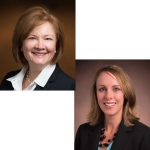“If we teach today as we taught yesterday, we rob our children of tomorrow.” ~John Dewey
A Superintendent in a rural Midwestern school district was seeking help to meet the communication needs of the students who struggled to comprehend language, produce speech, read and write to communicate, to learn, and to connect socially in their world of playgrounds, peers, tablets, and teachers. Because of the school district’s rural location, this superintendent had difficulty recruiting full-time speech-language pathologists who could help these students effectively use communication to achieve and succeed in this school district.
The superintendent tried using expensive contract companies to find speech-language pathology service providers who could meet the needs of the students. Although the therapists provided by the contract companies were effective, they were either hired on a short-term contract (e.g. traveling therapists) or would stay for only a few short months in the rural setting, preferring the amenities of the city. As a result, the children with communication needs were left without services and the district without a consistent and reliable provider. The Superintendent imagined a solution and reached with hope for teletherapy to solve her problem. The following is a historical tutorial from a provider on how an idea became a reality.
Understand the Environment
As a teletherapy provider, my first goal was to gain a thorough understanding of the environment and the district’s needs by visiting the schools. The small district office was within the elementary school of which the superintendent was also principal. The other schools within the district included a single middle school and a high school, both across the parking lot from the elementary school. All three schools needed the services of a speech-language pathologist. As the bell rang and students scurried to classrooms, I learned about the needs of all three schools – both the needs of the students (number, and variety of communication needs) as well as the requisite technology (hardware, software, firewalls), and local personnel resources available.
Illustrate Services
Using my laptop, I demonstrated a tele-treatment session for several areas of communication disorders, such as articulation, language, and cognition. I demonstrated how the treatment materials were displayed electronically; how the students would communicate face-to-face with the therapist using a web-camera; how they would meet goals and maintain motivation through evidence-based and interactive treatment sessions; and how data would be collected and progress reported.
Define Needs
We discussed the space needs – a private office or conference room outfitted with a computer. The school would supply an aide to pick up and return students to the classroom, start up the computers, help students sign on and use the technology. The aid would also help monitor behavior, ensure follow through with homework assignments, and help facilitate communication with teachers and other school providers. We recruited the district’s IT Department to ensure fire walls and band width were sufficient, and security measures in place to protect students’ privacy.
Test the Technology
Once this was complete, we performed test sessions at each school – the therapist in the city, the student in the school.
Communicate with Stakeholders
Finally, after all computers were up and running, we had teletherapy meetings with all the parents of the children in the speech therapy program. We discussed each student’s Individualized Education Plan, their goals, and demonstrated to the parents what a therapy session would look like for their child. We talked about ways to communicate with each other and discussed important conference dates, how home programs would be delivered, and the monthly newsletter that contained speech therapy suggestions and activities. We answered all questions they had about this mode of service and began the journey of creating what had only once been imagined.

